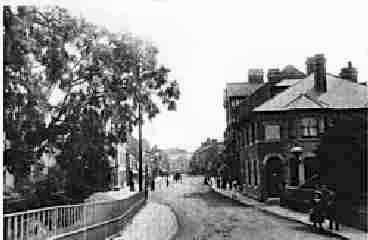 |
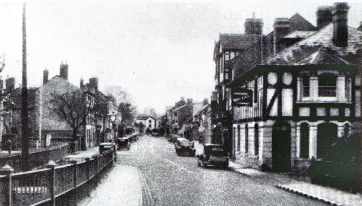 |
Teme Street from the bridge around the turn of
the century. when the 1908 restoration of the bridge took place, the railings
on the left were replaced by the more ornate style seen in the picture
opposite.
|
The same view of Teme street after the bridge was repaired. The Bridge
Hotel in the right foreground also seems to have received a facelift.
|
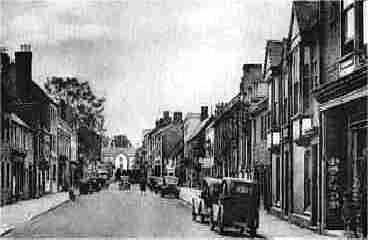
|
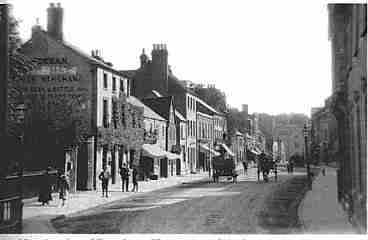 |
Teme Street in 1946 . This is a view of post-war
Tenbury with an Austin Severn, Morris Eight and a Morris Ten series M
seen coming towards us. On the left is a Bedford Van belonging to K. A.
Longe, motorfactors Worcester.
|
A late Victorian view of Teme Street The premises
of Hardeman's the cider merchants, on the left, have now been replaced
by modern shops. |
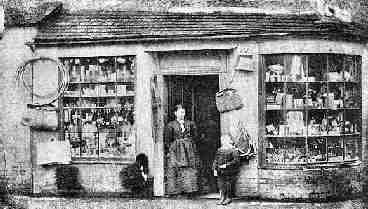 |
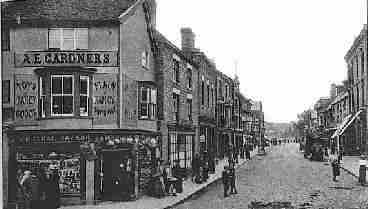 |
Middleton's corner shop in 1875. Later on, at
the turn of the century, it became known as Gardner's corner shop. Here
you see Mr. W Middleton with his aunt. Mr. W Middleton became a parish
councillor and was a well known postman. |
Teme Street in 1920 from Gardner's Corner looking up Teme Street
towards the bridge. |







